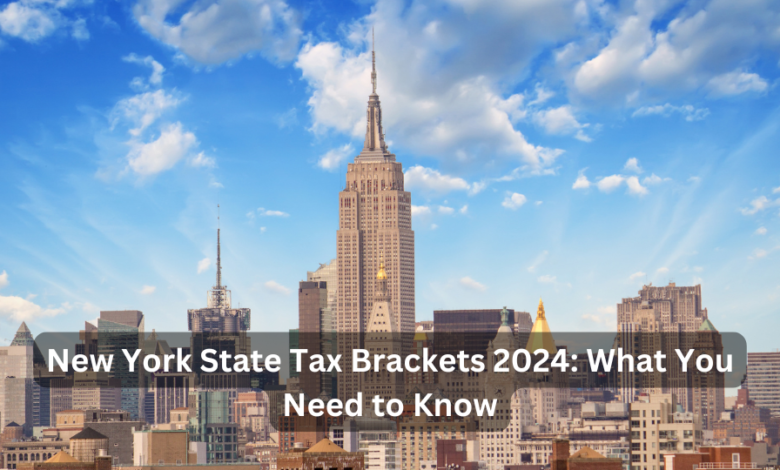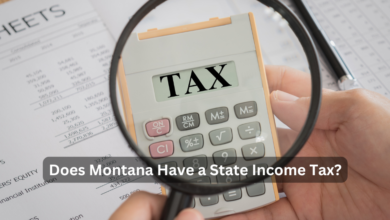New York State Tax Brackets 2024: What You Need to Know

Navigating the complexities of New York State taxes is essential for residents and businesses alike. Understanding the 2024 tax brackets is critical, not only for individuals planning their financial year but also for corporations seeking to optimize their tax obligations. In this comprehensive guide, we will delve into New York’s income tax system, the updated 2024 tax brackets, and their implications for taxpayers across the state. Our goal is to provide you with the most detailed and accurate information, ensuring you’re well-prepared for the upcoming tax season.
Understanding New York State’s Tax Structure
New York operates on a progressive tax system, meaning that as your income increases, so does the rate at which you are taxed. The 2024 tax brackets continue this approach, ensuring that higher earners pay a larger percentage of their income in taxes.
Progressive taxation helps ensure that tax obligations are distributed in a manner that reflects each taxpayer’s ability to pay. However, this system can also be complex, requiring a deep understanding of where your income places you within the New York State tax brackets.
2024 New York State Income Tax Brackets
The 2024 income tax brackets for New York residents are structured into eight categories, based on income levels. These brackets apply to different filing statuses, including single filers, married couples filing jointly, and head of household.
The tax rates for 2024 are as follows:
| Income Range (Single Filers) | Income Range (Married Filing Jointly) | Tax Rate |
|---|---|---|
| Up to $8,500 | Up to $17,150 | 4% |
| $8,501 – $11,700 | $17,151 – $23,600 | 4.5% |
| $11,701 – $13,900 | $23,601 – $27,900 | 5.25% |
| $13,901 – $21,400 | $27,901 – $43,000 | 5.85% |
| $21,401 – $80,650 | $43,001 – $161,550 | 6.33% |
| $80,651 – $215,400 | $161,551 – $323,200 | 6.85% |
| $215,401 – $1,077,550 | $323,201 – $2,155,350 | 9.65% |
| Over $1,077,550 | Over $2,155,350 | 10.90% |
As evident from the table, New York’s tax brackets follow a tiered system, where lower-income individuals are taxed at a lower rate, while high-income earners face significantly higher rates.
Impact of Tax Brackets on Different Income Levels
Each income bracket directly influences the effective tax rate that a resident of New York pays. For instance, if you’re a single filer earning $50,000 per year, part of your income will be taxed at different rates. The first $8,500 will be taxed at 4%, the next portion at 4.5%, and so on until the last portion of your income fits into its respective tax bracket.
The progressive tax system ensures that no single taxpayer is taxed unfairly, but it can also lead to confusion for individuals trying to estimate their overall tax burden. The key is to understand that not all of your income is taxed at the same rate—just the portion that falls within each bracket.
How New York State Tax Brackets Compare to Federal Tax Brackets
It’s essential to remember that New York state income tax is applied in addition to federal taxes. The federal tax brackets for 2024 are different and are based on broader income ranges. Therefore, residents need to account for both federal and state taxes when calculating their total tax burden.
For example, a single filer earning $80,000 will find themselves in a 22% federal tax bracket for 2024, while facing a 6.33% New York State tax rate on a portion of their income. This results in a combined state and federal tax rate that can significantly impact take-home pay.
To optimize your tax liability, it’s important to consider how your federal deductions and credits interact with New York State’s tax system. Strategies like itemizing deductions or taking advantage of tax credits for education or child care can help reduce your taxable income.
Tax Credits and Deductions in New York State
New York State offers a variety of tax credits and deductions that can help lower your overall tax burden. These provisions are designed to benefit residents based on their income, family size, and specific expenses.
Key New York Tax Credits for 2024
- Earned Income Tax Credit (EITC): New York residents who qualify for the federal EITC are also eligible for a state EITC, which provides a percentage of the federal amount. The state EITC for 2024 is 30% of the federal EITC.
- Child and Dependent Care Credit: This credit is available for taxpayers who have paid for the care of children or dependents while working or looking for work. In 2024, the amount of this credit depends on income and the amount spent on eligible care expenses.
- College Tuition Credit: If you paid for college tuition for yourself or a dependent, you may qualify for this credit. In 2024, New York offers a credit of up to $400 per student, or alternatively, you may claim a tuition deduction.
- Solar Energy System Equipment Credit: New York encourages residents to invest in renewable energy by offering a 25% credit, up to $5,000, on the installation of solar energy systems.
By taking advantage of these credits, you can reduce your taxable income or directly lower the amount of taxes owed.
2024 Updates: Changes in New York State Tax Legislation
New York State tax law is constantly evolving, and it’s crucial to stay informed about legislative changes that may affect your tax liability. In 2024, the state introduced several key updates that residents should be aware of:
- Middle-Class Tax Cut: Continuing the middle-class tax cuts from previous years, 2024 will see further reductions in the tax rates for New Yorkers earning between $43,000 and $161,550. These cuts are part of a multi-year effort to gradually lower the tax burden on middle-income families.
- High-Income Surcharge: For high earners, the temporary tax surcharge on incomes above $1 million has been extended through 2024. This surcharge impacts both individual filers and joint filers with incomes exceeding the threshold.
- Estate Tax Exemption: The New York estate tax exemption has increased for 2024, allowing estates valued at up to $6.58 million to pass free of state estate taxes. Estates above this threshold are taxed at rates ranging from 3.06% to 16%.
- Remote Work Tax Implications: With the rise in remote work due to the COVID-19 pandemic, New York State has clarified the tax obligations of non-residents working for New York-based employers. In 2024, non-residents working remotely are still subject to New York State income tax on income earned from New York employers.
Planning for Remote Work Taxation in 2024
One of the most significant changes for 2024 is the ongoing tax obligations for remote workers. Many individuals working from outside of New York for New York-based companies may still need to file a state tax return, depending on their work arrangement and employer’s location.
To avoid penalties, it’s essential to keep accurate records of the time worked in New York versus time spent working remotely. Non-residents should consult with a tax professional to ensure they comply with New York’s unique tax regulations for remote work.
Property Taxes in New York State
In addition to income taxes, New York residents also face some of the highest property taxes in the country. Property taxes are imposed at the local level and are used to fund services such as schools, fire departments, and public infrastructure. The average property tax rate in New York State is approximately 1.72% of a property’s assessed value, but this can vary widely depending on the county or municipality.
STAR Program: Property Tax Relief for Homeowners
The School Tax Relief (STAR) program offers eligible homeowners a reduction in their property taxes. There are two types of STAR benefits:
- Basic STAR: Available to homeowners with incomes below $250,000, this program provides a property tax rebate for primary residences.
- Enhanced STAR: Available to homeowners aged 65 or older with incomes below $93,200, this program offers a larger tax reduction.
For 2024, the STAR program continues to provide much-needed relief to homeowners struggling with high property taxes, though the rebate amounts may vary depending on your school district.
How to File Your New York State Taxes in 2024
Filing New York State taxes can be done electronically through the New York State Department of Taxation and Finance. Using e-file is recommended for quicker processing times and immediate confirmation of receipt. Taxpayers can also file paper returns, but electronic filing is generally faster and more secure.
Filing Deadlines for 2024
The New York State tax filing deadline for 2024 is April 15, aligning with the federal tax deadline. Extensions are available, but it’s crucial to file on time to avoid penalties and interest charges on any taxes owed.
For more information on filing, visit the official New York State Department of Taxation and Finance website.
Conclusion: Navigating New York’s 2024 Tax Brackets
Understanding the 2024 New York State tax brackets is crucial for all taxpayers, whether you’re an individual filer or part of a business entity. By staying informed about the latest updates, deductions, and credits, you can make informed decisions about your finances and reduce your overall tax burden.
In conclusion, it’s essential to not only familiarize yourself with the tax brackets but also take advantage of available tax credits and deductions. For professional guidance, consult with a tax expert who can help you navigate the complex landscape of New York State taxes.




